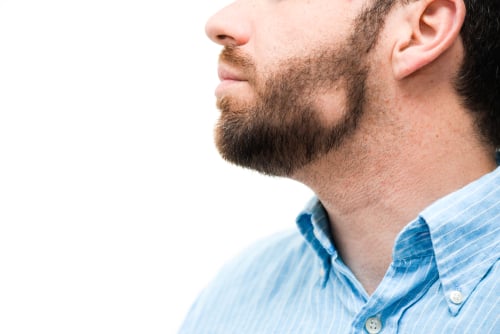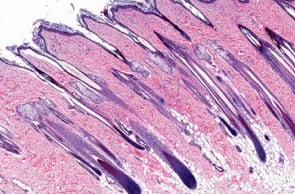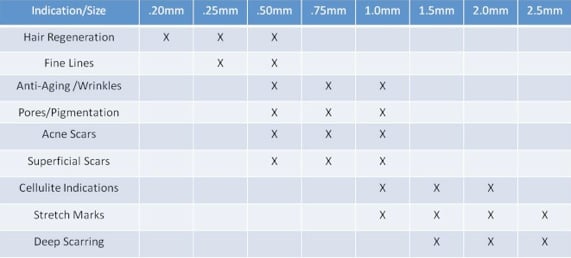Does Platelet Rich Plasma (PRP) Work for Alopecia?
By Dr. Stephen Cosentino
PRESIDENT OF EMPIRE MEDICAL TRAINING
Benefits & Limitations
 One of the more exciting uses of Platelet Rich Plasma (PRP) injections is its extended use for alopecia treatments in patients. Though it is generally used in combination with other treatments for the hair it has been shown to work as well as a stand-alone treatment option. The evidence-based science behind these results correlates to the various growth factors and concentration of stem cells within PRP. As part of Empire’s Platelet Rich Plasma course study you will be exposed to the various medical and aesthetic uses of PRP.
Within each dormant hair shaft, there are stem cells responsible for the growth cycle of hair, it does not contain pigment or melanin but is responsible for the production of hair follicle cell within the hair matrix. Platelet Rich Plasma (PRP), when introduced to the scalp, will trigger a number of biological activities through the release of glycoproteins thus activating specifically KGF/FGF7 – Keratinocyte growth factor. KGF/FGF7 is a paracrine mediator of epithelial cell growth including hair. CD34+Cells and other cytokines (Alpha SDF-1?) attract additional stem cells to the damaged follicle and regeneration site. There are other growth factors released within the PRP and they also help in differentiation, proliferation, and inducing other intracellular events. It is believed that these various biological activities and events will activate a dormant hair follicle and allow for new hair growth.
So why doesn’t PRP work for all patients suffering from thinning hair or patterned baldness? There are medical conditions and reasons for thinning and balding hair and there are certain hair follicles where the stem cells are permanently damaged. Differing delivery methods concerning Platelet Rich Plasma (PRP) and the concentration of PRP can influence outcomes as well. Typically Platelet Rich Plasma (PRP) for alopecia treatments are injected using micro-needling devices, these devices are used to force the solution to the proper depth for tissue interaction. Since PRP can only be absorbed through the skin through the pores of the skin and hair shafts it is an inexact method of delivery. The second issue for inconsistent results with PRP is the variability of platelet concentrations within PRP. Single spin methods in preparing PRP are inferior to the dual-spin units in preserving CD34+Cells and in the concentration of platelets needed for differentiation, regeneration, angiogenesis, and new cell proliferation to begin. The FDA Approved dual-spin method for harvesting blood platelets yields over 6 times more than other methods of harvesting platelets. Other factors affecting successful outcomes are the handling of the PRP and in a proper diagnosis of the type of hair loss, the patient is suffering from.
One of the more exciting uses of Platelet Rich Plasma (PRP) injections is its extended use for alopecia treatments in patients. Though it is generally used in combination with other treatments for the hair it has been shown to work as well as a stand-alone treatment option. The evidence-based science behind these results correlates to the various growth factors and concentration of stem cells within PRP. As part of Empire’s Platelet Rich Plasma course study you will be exposed to the various medical and aesthetic uses of PRP.
Within each dormant hair shaft, there are stem cells responsible for the growth cycle of hair, it does not contain pigment or melanin but is responsible for the production of hair follicle cell within the hair matrix. Platelet Rich Plasma (PRP), when introduced to the scalp, will trigger a number of biological activities through the release of glycoproteins thus activating specifically KGF/FGF7 – Keratinocyte growth factor. KGF/FGF7 is a paracrine mediator of epithelial cell growth including hair. CD34+Cells and other cytokines (Alpha SDF-1?) attract additional stem cells to the damaged follicle and regeneration site. There are other growth factors released within the PRP and they also help in differentiation, proliferation, and inducing other intracellular events. It is believed that these various biological activities and events will activate a dormant hair follicle and allow for new hair growth.
So why doesn’t PRP work for all patients suffering from thinning hair or patterned baldness? There are medical conditions and reasons for thinning and balding hair and there are certain hair follicles where the stem cells are permanently damaged. Differing delivery methods concerning Platelet Rich Plasma (PRP) and the concentration of PRP can influence outcomes as well. Typically Platelet Rich Plasma (PRP) for alopecia treatments are injected using micro-needling devices, these devices are used to force the solution to the proper depth for tissue interaction. Since PRP can only be absorbed through the skin through the pores of the skin and hair shafts it is an inexact method of delivery. The second issue for inconsistent results with PRP is the variability of platelet concentrations within PRP. Single spin methods in preparing PRP are inferior to the dual-spin units in preserving CD34+Cells and in the concentration of platelets needed for differentiation, regeneration, angiogenesis, and new cell proliferation to begin. The FDA Approved dual-spin method for harvesting blood platelets yields over 6 times more than other methods of harvesting platelets. Other factors affecting successful outcomes are the handling of the PRP and in a proper diagnosis of the type of hair loss, the patient is suffering from.



